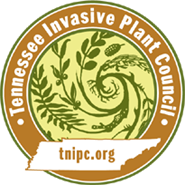Alternanthera sessilis (L.) R. Br. ex DC.
Sessile Joyweed| Category |
|---|
| Forb/Herb |

Description
Height
Joyweed can reach heights of up to 10 feet (3 m).Stem
The stems lie flat and are 0.4-4 inches (1-10 cm) long allowing rooting at the stem nodes. Branches have narrow lines of whitish hairs, and branch and leaf axils are tufted with white hairs.Leaves
The leaves are sometimes spear-shaped but mostly elliptic and are 0.05-0.2 inch (0.3-3 cm) wide. They are opposite and simple, and can be a purple color.Flowers
The small flowers are white to pink.Fruit
Seeds are spread by wind and water from August through October. The fruit is somewhat glistening and a light beige yellow color.Images
Photo: USDA APHIS PPQ Archive, Bugwood.orgMore images of Alternanthera sessilis
Life History
Joyweed is a perennial whose seedlings appear in April. Fruits appear during August-October in the Northern Hemisphere. They can easily be propagated by seed and by rooted stem parts. The average number of seeds per plant is about 2,000. The leaves of Alternanthera sessilis are commonly eaten in other countries for food. It is also used for medicinal purposes to treat varying illnesses. It is also called Dwarf Copperleaf. This plant is purchased for use in water gardens and aquariums.Habitat
Occurs in estuarine habitats, riparian zones, ruderal/disturbed, wetlands. In the US, it occupies tropical and subtropical regions. Preferred habitat is damp areas, ditches, and wet headlands or roadsides but it is able to survive in periods of drought. It prefers loamy, alkaline soil, low in exchangeable calcium and rich in total nitrogen.Origin and Distribution
Joyweed originated in Australia, Asia, Northern Mariana Islands, Federated States of Micronesia, Guam, Palau, Philippines, Soloman Islands, and Singapore.Other States Where Invasive: AL, AR, FL, GA, HI, LA, MD, SC, TX
Sources
Haragan, P.D. 1991. Weeds of Kentucky and Adjacent States: A Field Guide. The University Press of Kentucky. Lexington, Kentucky.Southeast Exotic Pest Plant Council. 1996. Invasive exotic pest plants in Tennessee (October 1999). Research Committee of the Tennessee Exotic Pest Plant Council. Tennessee.
